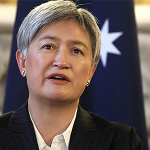The Tavistock’s notorious Gender Identity Development Service (GIDS) clinic in London – which prescribed puberty blockers to children – closed in March. Two replacement clinics have already opened in London and Liverpool. NHS England has now confirmed they will be joined by six more, starting with Bristol this coming autumn and a centre for the East of England by March 2025. The NHS is under immense pressure; should it really be spending money on these clinics?
The correct number of NHS paediatric gender clinics is not one, nor two and certainly not eight; it is zero
The waiting list for gender services is already enormous. There are currently 5,700 children in the queue for specialist gender care, including a child under the age of five. Even if the NHS opened dozens of clinics where children could be sent to discuss their gender, and perhaps seek advice about social transitioning, demand would outstrip supply.
It hasn’t always been this way. As recently as the 1980s, there were no paediatric gender clinics and no waiting lists. When GIDS opened its doors in 1989 it reportedly treated only two children in its first year of operation. But to misquote (slightly) from the 1989 movie Field of Dreams, ‘if you build it, they will come’. Indeed they did.
In this topsy-turvy world where children – or perhaps, more worryingly, their parents – think that puberty is optional and they can choose to grow up as men or women, it is possible that the provision of treatment has fuelled the demand for it. But now that puberty blockers – and presumably cross-sex hormones – are quite rightly off the table where gender dysphoric children are concerned, what treatment will be on offer in any case?
A certain mystique has built up surrounding ‘trans kids’. In previous generations, children struggling to come to terms with the reality of their sex would have been told to get over it. It seems that most of them did. In 2008, for example, it was reported that, ‘Only 2.5 per cent to 20 per cent of all cases of GID in childhood and adolescence are the initial manifestation of irreversible transsexualism’. We don’t call it Gender Identity Disorder any more. But the condition hasn’t changed – and nor have children.
Children who would otherwise have been left to grow up are instead being feted as somehow different, and with a special insight into their so-called gender identity. There may be no drugs on offer (for now), but there is a risk of setting these young people apart from the rest of their peer group. Talk of social transition and the lure of cross-sex hormones at the earliest opportunity – likely to be no later than 18-years old – will affect their mental and emotional development, if not their physical development.
The correct number of NHS paediatric gender clinics is therefore not one, nor two and certainly not eight; it is zero. If those services have nothing to offer but promises that can never really be delivered they should have no place in a publicly-funded health service. Children deserve better than a place on a waiting list to a clinic for specialist treatment to divide them from the muggles. Youngsters in psychological distress face a long wait for specialist gender care. But when they get to the front of the queue, they are likely to find that the treatment they receive does not necessarily make them any happier.








